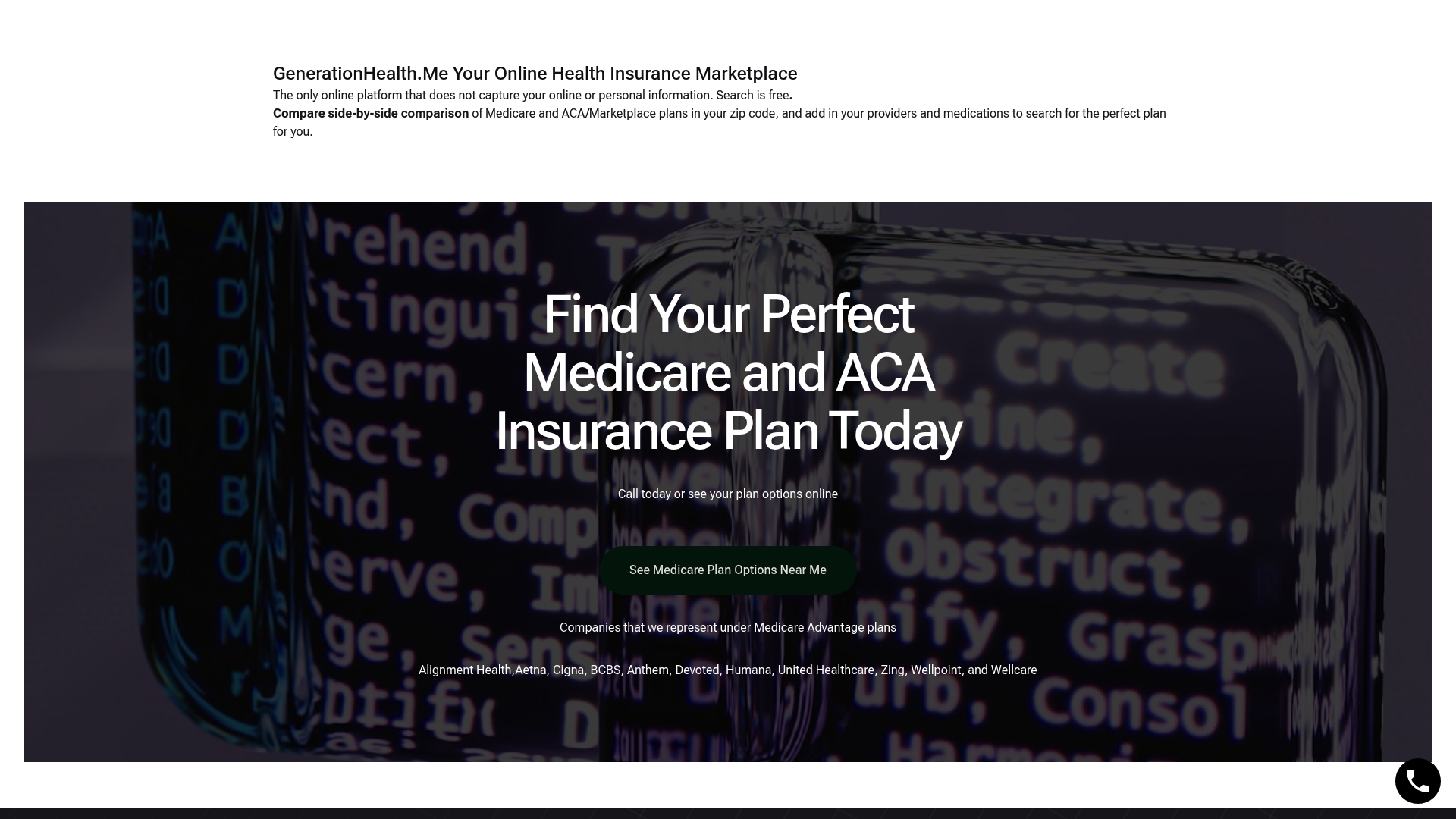Nearly 28 million Americans remain uninsured despite resources that can simplify health coverage enrollment. Choosing the right plan can feel confusing, but knowing what to expect helps you avoid costly gaps in care. With clear steps and practical tips, you can navigate your insurance options, understand different programs, and protect your health and finances with confidence.
Table of Contents
- Defining Step-By-Step Insurance Enrollment
- Types of Health Coverage Programs Explained
- Eligibility Requirements and Documentation Needed
- Breaking Down the Enrollment Process Steps
- Costs, Deadlines, and Financial Considerations
- Common Enrollment Mistakes and How to Avoid Them
Key Takeaways
| Point | Details |
|---|---|
| Step-by-Step Enrollment Process | A systematic approach simplifies selecting and purchasing health insurance, breaking it into manageable steps. |
| Comprehensive Coverage Options | Familiarity with various U.S. health coverage programs, including Medicare and Medicaid, is crucial for informed decision-making. |
| Eligibility and Documentation | Understanding eligibility requirements and gathering necessary documentation is essential for a successful enrollment process. |
| Avoid Common Mistakes | Be proactive to avoid pitfalls like missing deadlines and neglecting plan comparisons to secure optimal health coverage. |
Defining Step-By-Step Insurance Enrollment
Step-by-step insurance enrollment is a systematic approach to selecting and purchasing health coverage that breaks down the complex process into manageable, sequential actions. Unlike traditional insurance purchasing methods, this approach provides individuals with a clear roadmap to navigate the often overwhelming world of healthcare coverage.
According to research from Columbia University’s Public Health Department, health insurance systems globally vary significantly, but they all share a common goal: providing accessible healthcare to individuals. The two primary models – the Beveridge model and the Bismarck model – demonstrate how different countries structure their healthcare financing. In the United States, the insurance enrollment process combines elements from these models, allowing individuals to choose from various public and private health insurance options.
- Research-Backed Enrollment Strategy: Break down the process into clear, actionable steps
- Comprehensive Coverage Assessment: Evaluate individual healthcare needs and financial capabilities
- Systematic Selection Process: Compare and contrast different insurance plans methodically
For seniors and families seeking comprehensive insurance guidance, our Medicare Advantage Step Guide offers an in-depth walkthrough of the enrollment process. By understanding each step, you can make informed decisions that protect your health and financial well-being.
Types of Health Coverage Programs Explained
Health coverage programs in the United States offer a diverse landscape of options designed to meet the varying needs of different populations. Understanding these programs helps individuals make informed decisions about their healthcare protection and financial security.
Here’s a summary comparing the main types of U.S. health coverage programs:
| Program | Who Qualifies | Funding Source | Key Features |
|---|---|---|---|
| Medicare | Age 65+ Certain disabled | Federal | National program Multiple parts |
| Medicaid | Low-income All ages | State & Federal | Income-based Varied by state |
| Marketplace Plans | Legal U.S. residents No employer coverage | Federal & Private | ACA subsidies Open enrollment |
| Employer-Sponsored Insurance | Employees & dependents | Employers & Employees | Group rates Varied benefit design |
According to research from Columbia University’s Public Health Department, healthcare systems globally demonstrate different approaches to coverage. In the United States, we have several key health coverage programs that blend elements from the Beveridge and Bismarck models. These include Medicare, Medicaid, Marketplace plans, and Employer-Sponsored Insurance.
- Medicare: Federal health insurance for individuals 65+ and certain disabled populations
- Medicaid: State and federal program for low-income individuals and families
- Marketplace Plans: Affordable Care Act (ACA) insurance options with potential subsidies
- Employer-Sponsored Insurance: Coverage provided through workplace programs
For a deeper understanding of how different health insurance options compare, check out our guide on Medicaid vs Marketplace to navigate the nuanced world of healthcare coverage. By understanding these programs, you can select the most appropriate option for your unique health and financial needs.
Eligibility Requirements and Documentation Needed
Understanding eligibility requirements and gathering the right documentation are crucial steps in successfully enrolling in health insurance programs. These prerequisites ensure that individuals receive appropriate coverage based on their specific circumstances and financial situation.
According to the World Health Organization’s research on Universal Health Coverage (UHC), eligibility criteria are fundamental in connecting individuals with necessary health services without causing financial hardship. For most health insurance programs, documentation typically includes proof of identity, income verification, residency status, and age requirements.
Key Documentation Typically Required:
- Government-issued photo ID (driver’s license, passport)
- Social Security documentation
- Proof of income (tax returns, pay stubs)
- Residential address verification
- Birth certificate
- Immigration status documents (if applicable)
To navigate the complex landscape of insurance eligibility, our guide on ACA Marketplace eligibility provides comprehensive insights into the specific documentation and requirements for different health coverage programs. Understanding these requirements beforehand can streamline your enrollment process and help you secure the most appropriate health coverage.

Breaking Down the Enrollment Process Steps
Navigating health insurance enrollment can feel overwhelming, but breaking the process into clear, manageable steps makes it significantly more approachable. Understanding the systematic approach helps individuals confidently secure the right healthcare coverage.
According to the World Health Organization’s research on Universal Health Coverage, enrollment requires a strategic and thorough approach that ensures individuals receive appropriate healthcare services. The typical enrollment process involves several critical stages designed to match individuals with suitable insurance programs.
Key Enrollment Process Steps:
- Research Coverage Options: Evaluate available health insurance programs
- Check Eligibility: Confirm personal qualifications for specific plans
- Gather Documentation: Collect required identification and financial papers
- Compare Plans: Analyze coverage, costs, and benefits
- Select Appropriate Plan: Choose insurance that meets your healthcare needs
- Complete Application: Submit all required forms and documentation
- Review and Confirm: Verify application details before final submission
For seniors seeking detailed guidance through the enrollment journey, our tutorial on Medicare Advantage enrollment provides comprehensive, step-by-step instructions to simplify the process and help you make informed healthcare decisions.
Costs, Deadlines, and Financial Considerations
Healthcare enrollment involves careful financial planning and strategic timing. Understanding the complex landscape of costs, subsidies, and critical enrollment periods can significantly impact your insurance coverage and out-of-pocket expenses.
According to the World Health Organization’s research on Universal Health Coverage, financial considerations are fundamental in ensuring individuals can access healthcare without experiencing economic hardship. Premium costs, deductibles, copayments, and potential income-based subsidies represent key financial elements that dramatically influence insurance selection.
Key Financial Considerations:
- Annual Premium Costs: Monthly payments for insurance coverage
- Deductible Levels: Out-of-pocket expenses before insurance begins coverage
- Income-Based Subsidies: Government assistance to reduce insurance expenses
- Open Enrollment Periods: Specific timeframes for selecting or changing plans
- Special Enrollment Windows: Opportunities to enroll outside standard periods
- Penalty Considerations: Potential financial impacts of remaining uninsured
For seniors and families seeking comprehensive financial guidance, our senior enrollment resources provide detailed insights into managing healthcare costs and navigating complex insurance financial landscapes. Understanding these nuanced financial elements can help you make informed decisions that protect both your health and your financial well-being.
Common Enrollment Mistakes and How to Avoid Them
Health insurance enrollment can be a complex process fraught with potential pitfalls that could compromise your coverage and financial security. Recognizing and preempting common mistakes can save you significant time, money, and unnecessary stress during the enrollment journey.
According to the World Health Organization’s research on Universal Health Coverage, avoiding enrollment errors requires careful attention to detail and proactive planning. The most frequent mistakes typically stem from inadequate research, missed deadlines, and incomplete documentation.
Top Enrollment Mistakes to Avoid:
- Waiting Until the Last Minute: Rushing decisions leads to suboptimal coverage choices
- Overlooking Subsidy Eligibility: Missing potential financial assistance opportunities
- Failing to Compare Plans: Selecting the first available option without thorough comparison
- Incomplete Application Submission: Missing critical documentation or sections
- Ignoring Network Restrictions: Choosing plans without verifying preferred healthcare providers
- Skipping Annual Review: Not reassessing coverage needs each enrollment period
To help you navigate these potential pitfalls, our guide on understanding open enrollment provides comprehensive strategies to ensure a smooth, error-free insurance enrollment experience. By being informed and strategic, you can confidently select the right coverage that meets your healthcare needs.
Simplify Your Insurance Enrollment Journey Today
Navigating the complex world of health insurance enrollment can feel overwhelming, especially when you need to understand eligibility, compare plans, and avoid costly mistakes. This guide breaks down the challenge of making informed coverage decisions into manageable steps, addressing common pain points such as missed deadlines and confusing documentation requirements. Whether you are preparing to enroll in Medicare or shopping for Marketplace options, knowing where to start and how to proceed is crucial for protecting your health and finances.
Experience peace of mind with trusted resources that simplify every step of the process. Visit our Medicare Advantage Archives for detailed insights designed for seniors and those new to Medicare.

Take control of your healthcare enrollment today with GenerationHealth.me. Get clear, step-by-step guidance, compare your options, and find affordable coverage that fits your unique situation. Don’t wait until deadlines close or costs rise. Explore expert advice and personalized support now at GenerationHealth.me and discover helpful tips from our Medicare & Seniors-Insurance Agents Archives. Make confident decisions that safeguard your future with our easy to follow enrollment assistance.
Frequently Asked Questions
What is the step-by-step insurance enrollment process?
The step-by-step insurance enrollment process involves researching coverage options, checking eligibility, gathering necessary documentation, comparing different plans, selecting an appropriate plan, completing the application, and reviewing the details before final submission.
What types of health coverage programs are available in the United States?
The main types of health coverage programs include Medicare, Medicaid, Marketplace Plans, and Employer-Sponsored Insurance, each designed to meet the needs of various populations based on age, income, and employment status.
What documentation is needed for health insurance enrollment?
The essential documentation typically required includes a government-issued photo ID, Social Security documentation, proof of income, residential address verification, and birth certificate, along with immigration status documents if applicable.
What are the common mistakes to avoid during health insurance enrollment?
Common enrollment mistakes include waiting until the last minute, overlooking subsidy eligibility, failing to compare plans, submitting incomplete applications, ignoring network restrictions, and skipping the annual review of coverage needs.